“Always rise to an early meal, but eat your fill before a feast.
If you’re hungry you have no time to talk at the table.”
Using the central board in A Feast for Odin, players have to hunt, gather basic materials, refine those materials, develop their production-buildings, build/buy ships, and raid settlements.
The resulting earnings are placed on the players’ board in the best possible pattern to produce income and (later) victory points.
So this is a pretty in-depth game, lots of things going on so I’ll just cover the general bits…
But, as the blurb says, you’re basically placing workers to get tiles to cover things on boards, that’s pretty much it.
Everyone gets a player board to hold all of their stuff…
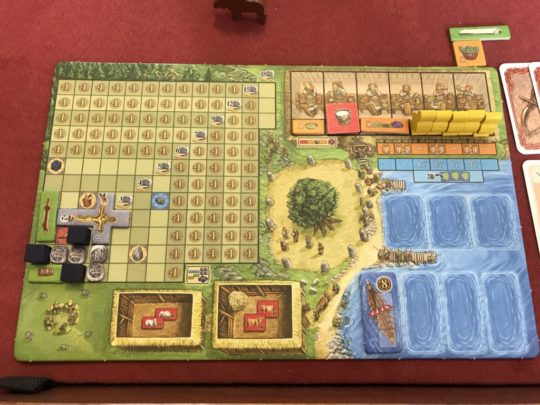
Player Boards
That grid on the left is full of spaces marked -1 point so this is where you’ll place tiles, Ore cubes and Money tokens to cover them up. You need to ‘block out’ sections starting in the bottom left to increase your income. You can also surround icons to get certain resources as income.
The bottom is a pen for animals, no one in our game went the animal route so I have no idea what they do.
The bottom right is where you store the ships you have purchased.
The top right is the Feast table, for each round, you need to have enough Food/Mead/Money to fill the spaces on this table or take a penalty.
Phases
The game is played over many, many phases (12 to be exact) shown on this board.
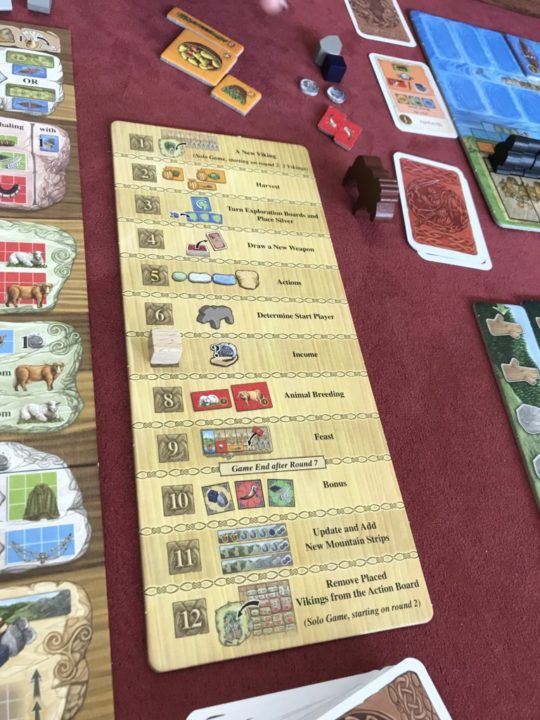
Most of these phases are simple upkeep and move things, update the board, collect income, change the first player etc
Actions
Phase 5 is the interesting one, taking action.
There are many MANY actions, more than the number of phases by a long way and they are played on this board…
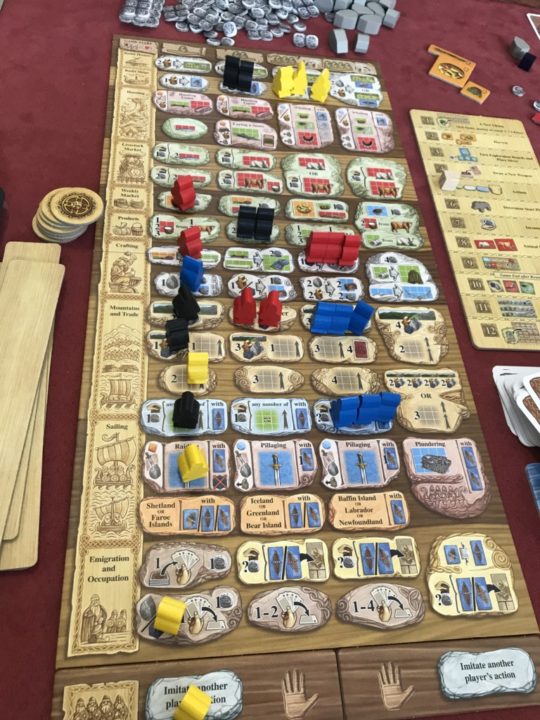
The action spaces are divided into 4 columns and to activate them you need to place 1,2,3 or 4 workers depending on if they go into columns 1,2,3 or 4.
The actions allow you to…
- Build Houses, gain a separate board with -1 symbols to cover with Tiles for extra points
- Build Ships, Needed for Whaling, Raiding, Emigrating and Sailing
- Hunting, gain several different types of food to Tile on a D8 roll
- Buy/Sell Animals and Products
- Crafting, to upgrade resources into Tiles or Tiles into bigger Tiles
- Gather Resources
- Trading, to swap Tiles for other Tiles of the same size but different colour (That’s important)
- Sail to Islands to claim them and get yet ANOTHER board with -1’s to cover
- Draw and Play Occupation cards which give you varied one-shot and permanent abilities
- Emigrate, flip a boat you have and place it on your Feast Table to reduce the size of the required Feast and score big points.
Each round you’ll gain an additional Viking to place as a worker and after 7 rounds the game ends.
You score points for playing Occupation cards, points from Player/Island/House boards and a bunch of other stuff.
Most points win.
A Feast for Odin Positives
There’s a lot of stuff going on, but it’s very simple and fairly easy to understand.
The ‘puzzle’ of gaining tiles to cover bits of another board is actually pretty fun. There are some placement rules I didn’t get into that involve certain colours and some colours not touching. Game to game, you can play this ’tile game’ differently and give priority to other actions and elements.
The Occupation cards that give you different abilities will allow you to vary your play game-to-game depending on what you get. It doesn’t dictate your play, it just rewards certain actions.
A Feast for Odin Negatives
Tile placement has a few niggly rules I still don’t understand 🙂
There is a tonne of little bits and tiles everywhere. Luckily, they’re well organised.
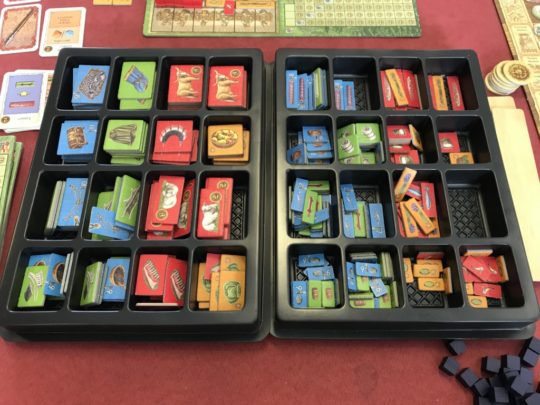
Summary
A Feast for Odin is a good Euro that’s much less stressful than Uwe’s other big games with a load of replayability.
Jesta ThaRogue
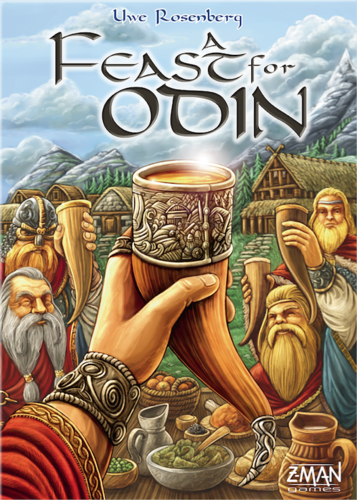
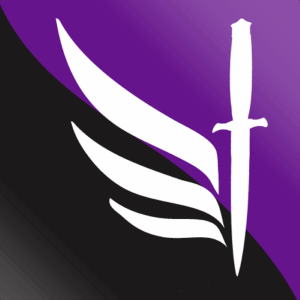
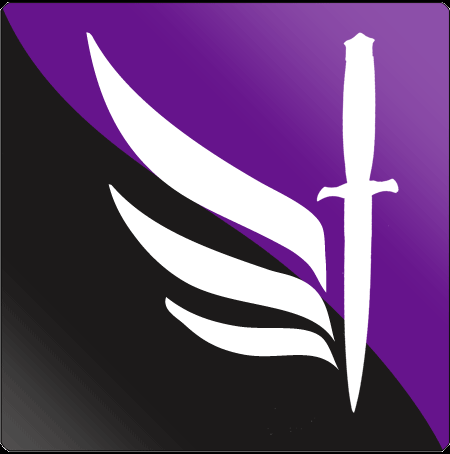
Leave a Reply